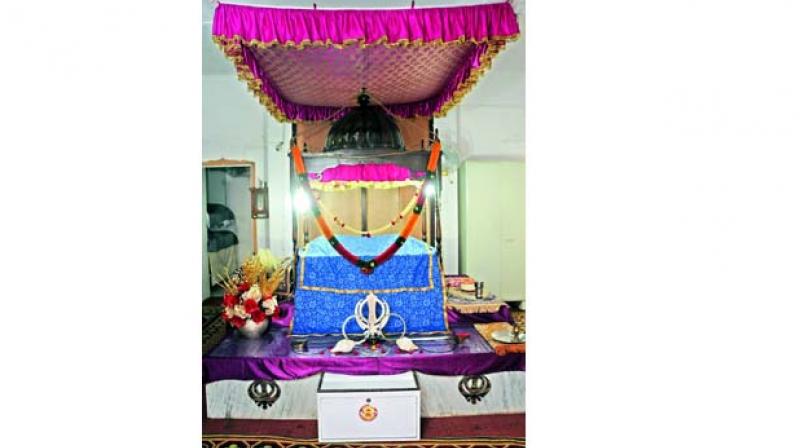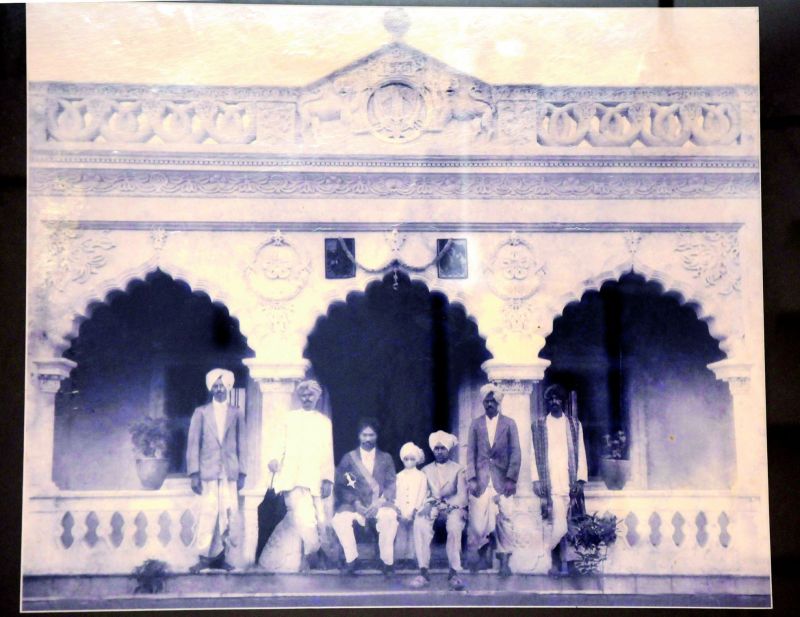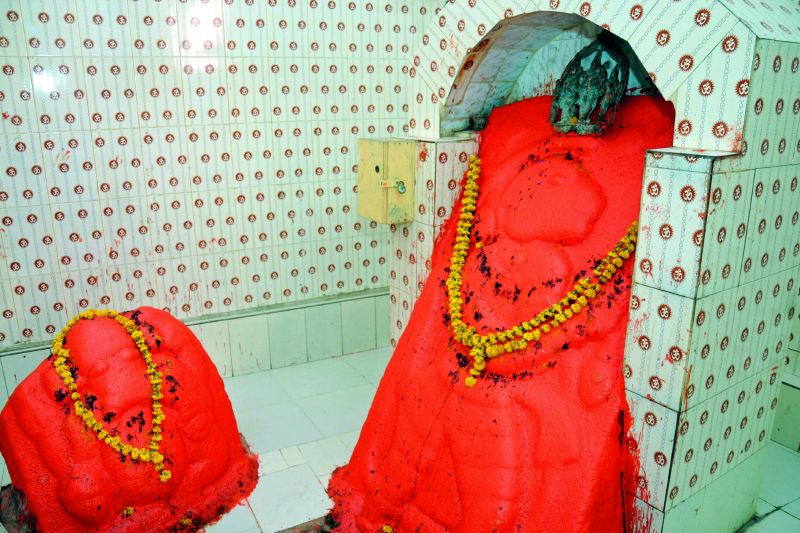Telangana: The Deccan's hidden gem is a sikh Gurudwara

Hyderabad: In January of this year, Telangana’s biggest gurudwara, Darbar Saheb of Gurudwara Saheb Barambala, was inaugurated at Attapur, Kishanbagh. In all the pomp and splendour, what many of the attending devotees may have missed is a fascinating, clearly historical little structure tucked away next to the large new one.
That small structure is, in fact, the earliest gurudwara in the Deccan, dating back more than 150 years to the time of Maharaja Ranjit Singh, the famed Lion of the Punjab.
Likewise, a small gurudwara in Sikh Village, established by Sardar Kushal Singhji and Sardarni Kundan Kaur in 1930, is remarkable for the fact that it encloses a small temple of Hanuman and Ganesha, which remains as one unit. Most probably built under a tree to begin with, the gurudwara seems to have been incorporated into the temple complex later, and those devotees who know about it come here often, firm believers in what they believe are the magical powers vested within this little complex.

The second reason why this gurudwara is special is that a rare Lahore lineage lithograph of the Guru Granth Sahib, the holy book of the Sikhs, is kept here.
The Sikhs in and around this region, now known as Deccani Sikhs, trace their lineage back to the Punjab through two legends. One is about Guru Nanak who, reportedly accompanied by his disciples Bala, a Hindu, and Mardana, a Muslim, were crossing the Deccan, and stopped in Hyderabad. This first visit opened the doors of history and, in September 1708, Guru Gobind Singh, the tenth Sikh Guru, then travelling in the South, drew his last breath at Nanded. Upon his death, some of his entourage of 300 men left for home, while the others made Nanded their home by marrying into local families. The descendants of these men are known as Deccani Sikhs.

The second legend has it that in 1832, the fourth Nizam of Hyderabad, whose kingdom consisted of 16 provinces, was facing trouble from the provinces, including Mahbubnagar, Nargunda (Nalgonda), Warangal, Karimnagar, Adilabad, Nizamabad, Medak, Nanded, Purbani, Beed, Usmanabad, Aurangabad, Gulburga, Raichur, and Bidar. Since he could not reach out to the distant provinces, he could not work out a way to control them.
Eventually, his Punjabi Khatri Prime Minister, Chandu Lal, advised him to seek the help of Maharaja Ranjit Singh. The Nizam sent his advocate Darvash Mohammed to the Maharaja, who acceded to the Nizam’s request, on condition that the Nizam should help in the construction of a gurudwara at Nanded, where Guru Gobind Singh had been laid to rest. The Nizam readily agreed, and the gurudwara was built between 1832 and 1837.
Maharaja Ranjit Singh’s 14,000- strong army, flying 14 holy flags and led by risaldars, was sent to Hyderabad from Lahore, with instructions that not one man should return to Punjab until recalled. The army reached Hyderabad in four months, and was given land by Maharaja Kishen Pershad to set up a cantonment at Mir Alam Tank, Attapur, on Rajendranagar Road.
Many Sikhs, whose forefathers were part of that army, continue to live here to this day. Four chhavnis (barracks) were also established during this time, at Barambala, Uppaguda, Kishanbagh and Sikh Village.
Once they had controlled the revolt, the grateful Nizam graciously asked the Sikh soldiers to stay back, since Ranjit Singh had died in the meanwhile. Thus, the soldiers now entered the Nizam’s service and, having married into local Rajput families of Hyderabad and adjoining districts, became known as Deccani Sikhs.
It is also said that the Nizam offered the whole of Nirmal to the Sikhs, but they refused because it was a forested area and not a very safe one in which to set up home. The Sikhs aided in tax collection, spread the Nizam’s rule and were, by all accounts, a strong peacekeeping force, until the regiment was abolished after India’s Independence.
Today, the Deccani Sikhs think of themselves as locals, they feel this is their home and that Telangana has treated them well. The small Gurudwara Sahib in Sikh Village was once spread over seven acres, but now barely has room to breathe, with buildings cropping up on all its three sides, with a wall on the fourth. The only good thing here is that branches of the founding family live around the gurudwara and are able to take care of it, also hosting a langar every Sunday.
Sukhpal Singh, who knows a lot about the gurudwara because his father was one of the principal builders, says, “Praying at the gurudwara for 21 days and at the Hanuman and Ganesha temple for 40 days have solved a lot of problems for a lot of people.”
Subir Singh, founder Kushal Singh’s grandson, who lives next door, adds, “Kishen Pershad would pay maintenance money in those days and the land belonged to the Nizam, which was donated to the Sikhs. People must have had a lot of land then, but since we had left our homeland, we had to marry the locals and had to sell land for such expenses, so we lost most of it.”
The increasingly cosmopolitan nature of the area today has forced the gurudwara to be hidden away in a side lane, off a huge thoroughfare.
Some parts of the original structure were razed and additions made, including the Hanuman and Ganesh temples, along with a couple of rooms. Some part of the land was sold to a missionary, under whose purview is the baoli or stepwell, now more or less used as a garbage dump.
Clearly a marvel of stone masonry, the stepwell once resonated to the laughter of children swimming in it, and was apparently home to water snakes.
A huge wild badam tree is now a thing of the past, too, chopped off to get rid of its falling leaves and branches. Subir’s mother adds, “There were a lot of tamarind trees and the place was well shaded, but people started building and the trees had to be cut down.”
“Having and maintaining the mandir here is also significant to us,” says Subir, a well-known shooter and state champion in 2012 in clay pigeon shooting. “Sikhs do not believe in idol worship, but we adopted the local culture and accepted the temple’s existence. In fact, during Ugadi, we also serve pachadi if it coincides with the day of the langar.”
At present, they receive no funds from the government’s endowments department or any other association. “We spend money from our own pockets,” says Subir, who boasts a sizeable collection of swords in his house, belonging to his father.
There’s a sense of devotion and contentment about this gurudwara. Small and hidden but full of history.

